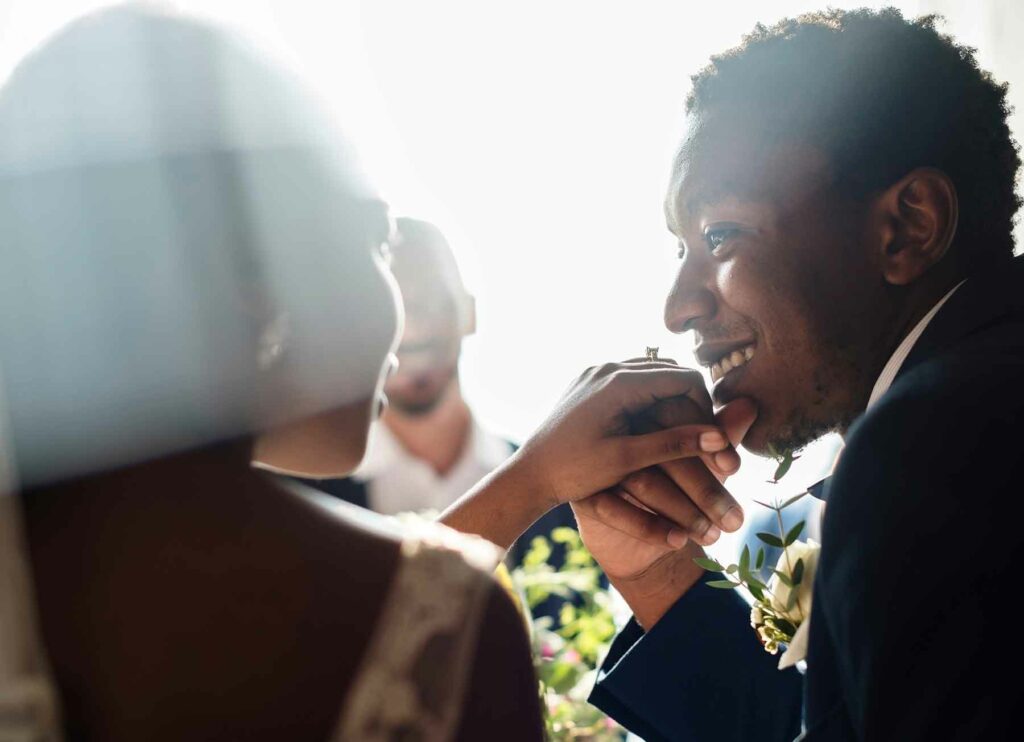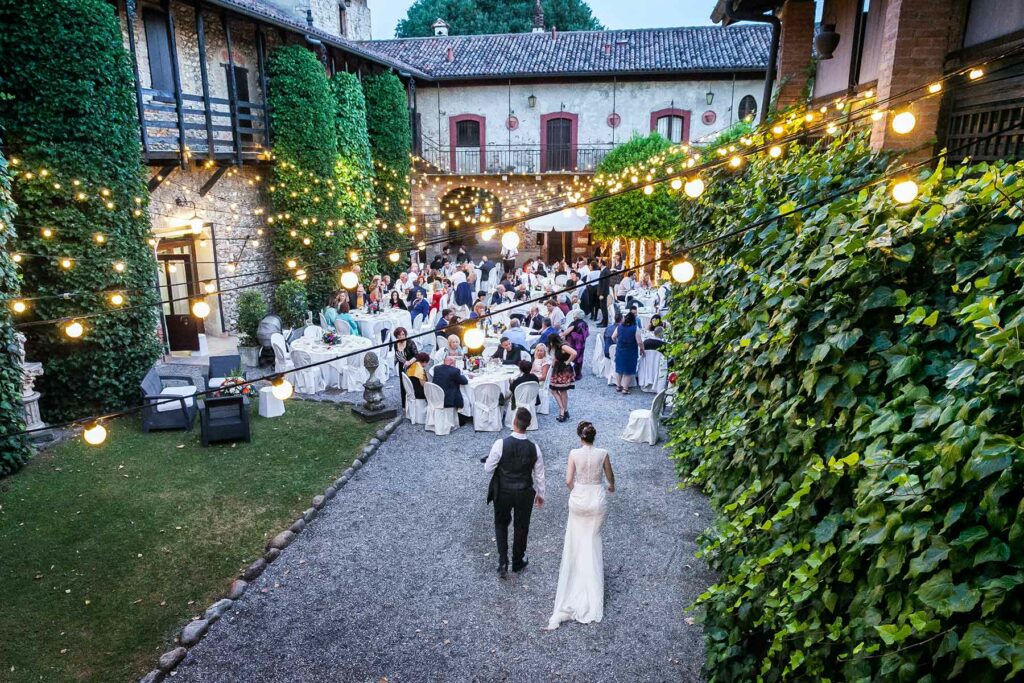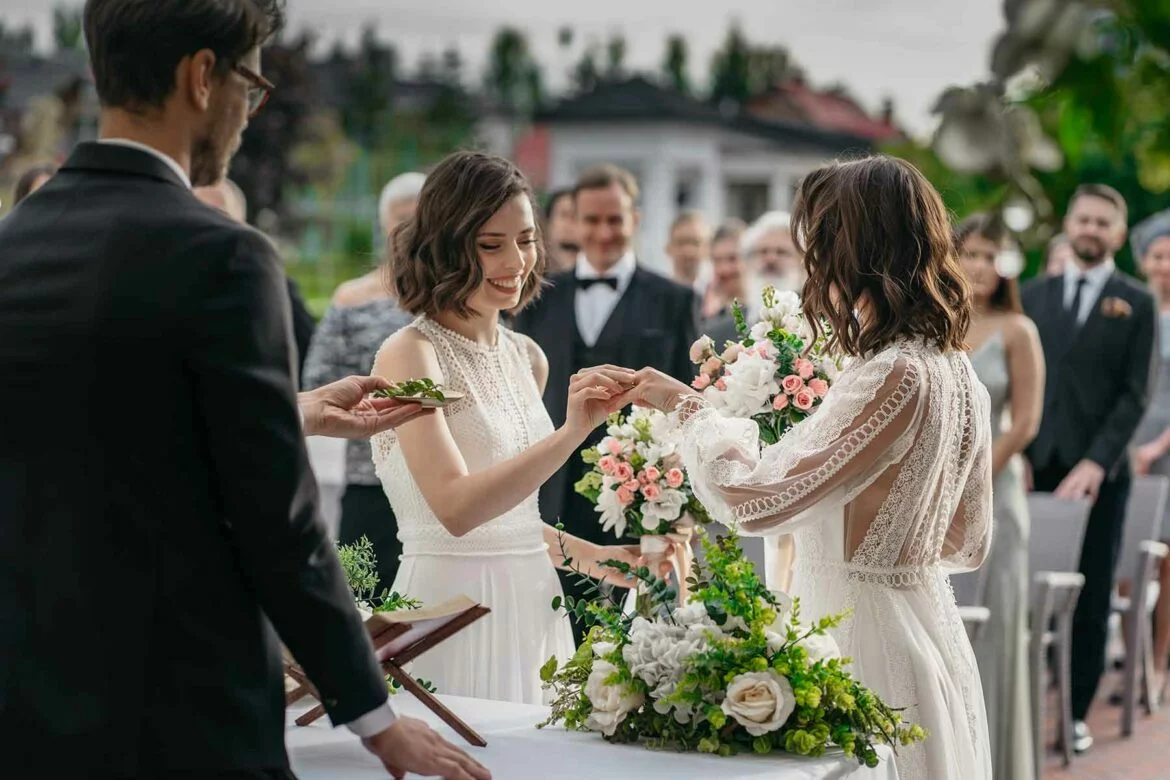Last Updated on September 14, 2022 by Joy Editors
Getting married is the beginning of an exciting new adventure. A celebration of two people coming together to spend the rest of their lives together? Well, it doesn’t get much sweeter than that.
After the engagement, but before the “I dos,” you’ll need to start wedding planning. Think of it as creating your roadmap for the journey you’re about to embark on together. Many newly engaged couples may find this time overwhelming, but it doesn’t need to be that way! This quick guide will give you step-by-step instructions for the first few months following your engagement, including where to start when planning a wedding and how to ensure the planning process brings you and your partner closer (without stressing you out!) as you approach the big day.

Make the Big Decisions
There isn’t one right way to go about planning a wedding or a magic order to do things that will suddenly make wedding planning a breeze, but this roadmap lays the groundwork for a great start. Want to take care of step three before step two? No worries! As long as you get everything done on your list before the big day, you can go in whatever order makes you feel best. In these early months, it’s all about setting yourself up for success — these are the biggest to-do items on your wedding planning checklist. Making these decisions early will give you plenty of time down the line to linger over the details and avoid any last-minute planning headaches.
1. Get on the same page as your partner.
The most important step in the wedding planning process is aligning your wedding ideas with your partner’s. Will it be a big or small wedding? A DIY backyard celebration? Or maybe a destination wedding is more your style? Before you dive into the details, have one (or a dozen!) conversations about what the perfect wedding looks like for each of you. That way, you can both be sure you’re on the same page for every other step of the wedding planning journey.
2. Select some dates.
Chances are you won’t be able to pick your exact wedding date until after you’ve selected the ceremony and reception venue, but it’s important to have some dates in mind. Spring wedding? Fall wedding? Having a date range will help lay the groundwork for the rest of the process. And remember, 12 to 15 months of lead time is ideal for ensuring all your vendors are available and have enough time to bring your dream wedding to life.
3. Set a budget.
This is a big one. Having an idea of how much (or how little!) you’d like to spend on your wedding will be the determining factor for a lot of what comes next on this list. A wedding budget is a great way to guide decisions about nice-to-haves versus need-to-haves. Plus, being on the same financial page as your partner at the beginning will ensure you’re both happy after the florist and caterer have paid.
4. Pick a wedding venue.
Now that you have a budget and a few dates in mind, you can pick the perfect spot to say “I do.” Where you get married should first and foremost feel like the right place to start your life as newlyweds, but remember, wherever you pick will have implications for the rest of the wedding day. The venue’s aesthetic should fit with your overall wedding style, whether that’s rustic-chic, modern glam or something in between. And, logistically, you can’t pack 200 people into a venue that will only hold 75, so keep that in mind as well.

Get Organized
Now that you have the major decisions locked, you can spend some time getting organized . If you haven’t hired a wedding planner yet, this is a great time to decide if you need additional help bringing your vision to life. A planner will be able to provide you with some wedding inspiration, ensure you stay on budget and help manage some of the nitty-gritty details.
5. Make a wedding guest list.
With a venue booked and an idea of how many people you can fit, it’s time to decide who those people will be! Your wedding guest list should include all the people you want to surround you as you start this exciting adventure. Close friends, family members — the people you love and who have been with both of you since the beginning. If your third cousin twice removed who you’ve never even met doesn’t make the cut, don’t feel bad. This is the time to be a little selfish.
6. Pick your wedding party.
Choosing your wedding party is one of the best parts of wedding planning because you get to invite your favorite people to be part of your big day. Don’t let this list stress you out. Just think about who you most want to be part of your wedding ceremony and let them know in a heartfelt or creative way. Have fun with it!
7. Get your vendors in order.
Wedding vendors are often in high demand, so make sure you book them well in advance. Want a florist? A specific wedding photographer or videographer? Need rentals? Food? Start reaching out to key vendors early to make sure you have the best wedding team possible and that your guests have a great time.
8. Work your way through some wedding checklist items.
While some things, like obtaining your marriage license and creating a seating chart, are time-sensitive and need to be done closer to your wedding ceremony, there are a handful of detailed tasks you can start now. Get these items out of the way early to help keep stress levels down as you approach your “I dos.” Here they are:
- Set up a wedding website. A website is an excellent resource because it means you have somewhere to point people to when they have questions. It can include things like the wedding date, wedding events (like the rehearsal dinner), and how people can participate if they can’t make it in person. Save yourself from having to respond to a million questions—you can politely say, “just check the website!”
- Create your wedding registry. Your registry is another great piece of information to include on your wedding website. Get this wish list started early, as you can always add to it in the months and weeks leading up to your wedding.
- Send out Save the Dates. Whether you’re mailing out cards or sending them electronically, letting your loved ones know the date and general location of your wedding around eight months before your big day gives them plenty of time to make travel plans and, well, save the date. While it may be tempting to drop your formal wedding invitations in the mail right now to collect RSVPs and get a final guest count, there is such a thing as sending these too early. Even if you have a date, time and location locked and loaded, hang tight just in case you have a last-minute change of plans.
- Consider wedding insurance. Yes, it’s a thing! It might not be entirely necessary, but it’s definitely worth looking into.
- Choose an officiant. Maybe you’re having a religious ceremony, maybe you’re having a loved one to officiate your vows. Either way, having the right person with you while you get married is a big deal, so choose from the heart and make sure to get on their calendar early.

Have Some Fun
Like we said at the beginning, there’s no rule for where to start when planning a wedding. But, saving a few exciting things for the end of this first stretch of planning will give you something to look forward to — who doesn’t love shopping and a little self-care? Wrap up this phase of your wedding planning journey with some bright spots amidst the minutiae of details. These are some of our favorite ways to sprinkle a little fun into the early months of the wedding planning process:
9. Pick your wedding rings.
Shopping for wedding rings is an extraordinary part of wedding planning, so make sure you take the time to enjoy it. Maybe you want to go the vintage route and turn your shopping trip into a shared treasure hunt at some specialty shops. Maybe you go more traditional and head to a jeweler for your wedding bands. Do whatever feels right to you, and don’t forget to have some fun.
10. Select wedding attire.
Whether you’re shopping for a wedding dress, tux or other wedding attire, this is an experience you can share with your loved ones. Invite a couple of your closest friends or family members along to make it a party. Sip Champagne while discussing different styles and colors — just make sure the outfits are what you want to be looking back on in 20 years!
11. Will there be a hashtag?
If social media is going to play a part in your wedding, get creative! A wedding hashtag is a great way to experience your wedding journey from your guests’ perspective when you’re back in your hotel suite the next day. Just make sure Aunt Suzie knows how to work the app!
12. Make time for yourself.
Wedding planning can be a fun, enjoyable process that brings couples even closer together. But we’re not going to lie, it can get stressful, too. There are a lot of decisions to be made, so remember to make time for the two of you just to be together, without any decision-making conversations. You’re getting married because you love each other and because you’re ready to start this new, exciting adventure. Don’t let the logistics get in the way of that. Have fun, fall even more in love and just enjoy the road to saying “I do.”

